HISTORICAL DEVELOPMENT OF THE LEGISLATURE
| Year | Event |
|---|---|
| 1843 |
Establishment of Legislative Council The Legislative Council (“LegCo”) was established and composed of the Governor and three Official Members. 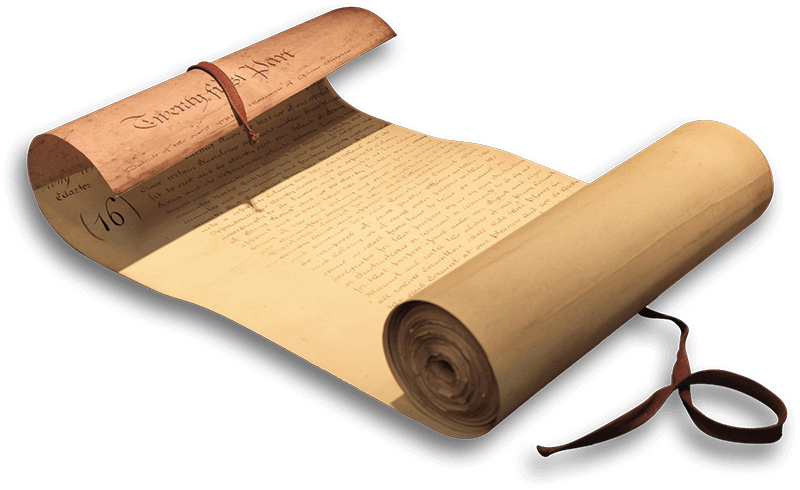
The Letters Patent provided the first constitutional framework of Hong Kong (Replica)
(Source from The National Archives of the UK: Public Record Office C 66/4683)
|
| 1844 | Earliest LegCo sitting The first sitting was held and the first Hong Kong Ordinance was passed. |
| 1845 | First version of Standing Orders and Rules for LegCo The first version of Standing Orders and Rules for the Legislative Council of Hong Kong was adopted. |
| 1850 | First two Unofficial Members The first two Unofficial Members, David JARDINE and Joseph Frost EDGER, were appointed to LegCo with the aim of broadening community representation in the Council. |
| 1880 | First Chinese Unofficial Member The first Chinese Unofficial Member, barrister NG Choy (also known as WU Ting-fang), was provisionally appointed to LegCo. After NG Choy’s resignation, WONG Shing was officially appointed as the Chinese Unofficial Member of the Council in 1884. In the following years, LegCo continued to expand its membership to include more Official and Unofficial Members. |
| 1888 | Amendments to the Letters Patent The Letters Patent were amended. Under the revised article, the Governor was required not only to seek the advice but also the consent of LegCo in enacting laws. |
| 1890 |
Publication of the Hong Kong Hansard 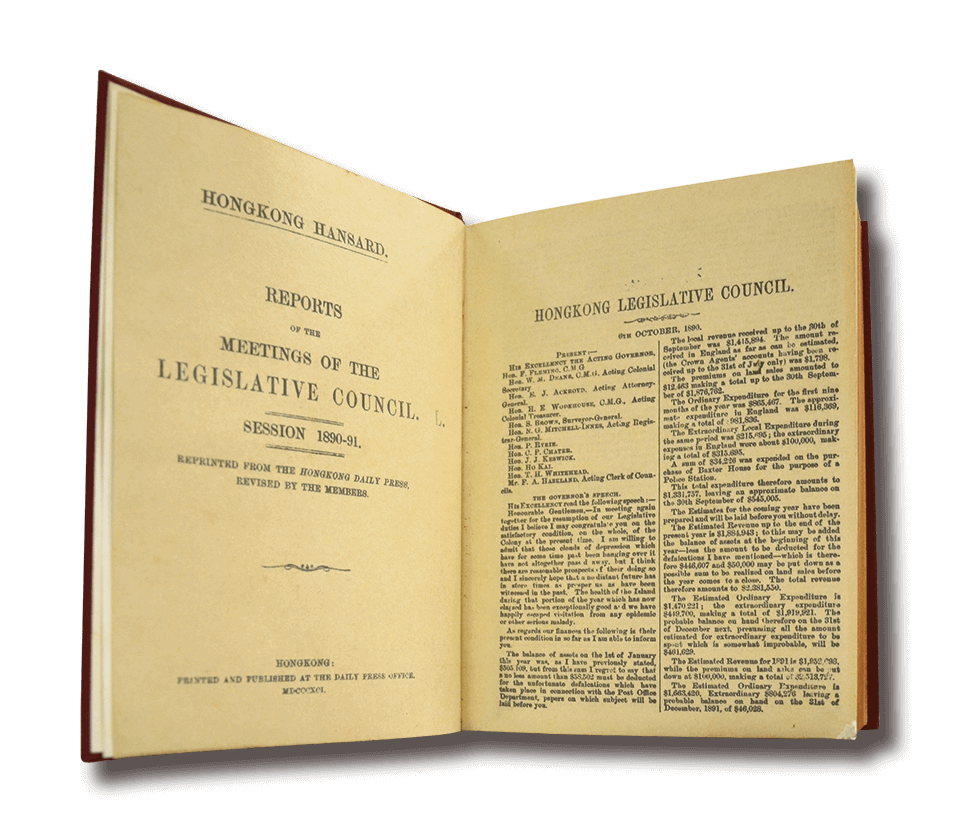
Hong Kong Hansard (Session 1890-1891) (Replica)
(Source from LegCo Archives, LAS 1/4/34)
|
| 1941 | Adjournment of LegCo sitting On 13 November 1941, Governor Mark YOUNG held the Council’s last sitting before the Japanese occupation of Hong Kong. The sitting was adjourned until further notice. |
| 1946 |
Resumption of LegCo 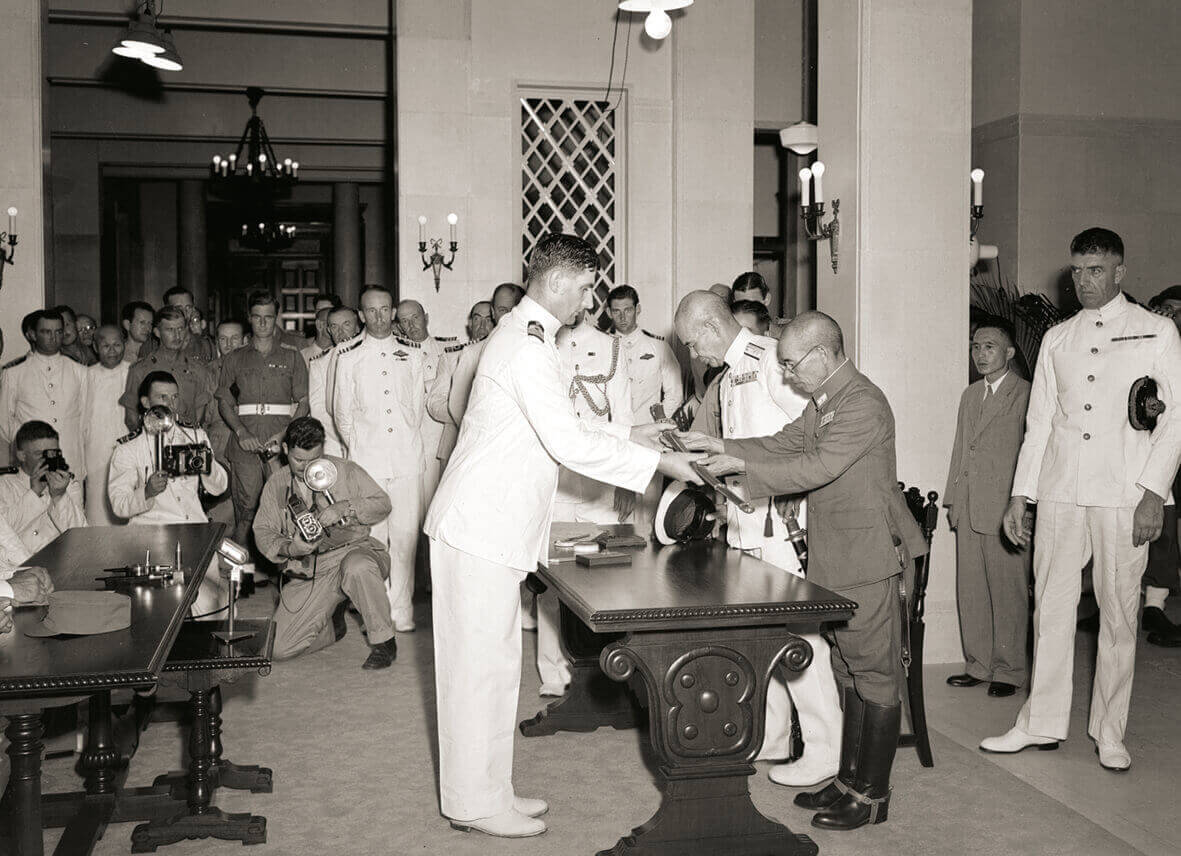
Major-General Umekichi OKADA delivered his sword as a symbol of surrender of Japan
(Courtesy of Library and Archives Canada: PA-114815)
|
| 1963 | Establishment of UMELCO The Office of the Unofficial Members of the Executive and Legislative Councils (“UMELCO”) was established to promote closer relationship between members of the public and the Unofficial Members of the two Councils. |
| 1964 | Numbers of Official and Unofficial Members Membership of LegCo was increased from 18 to 26. For the first time, the numbers of Official Members and Unofficial Members were the same. |
| 1965 | First female Unofficial Member Mrs Ellen LI Shu-pui, the first female Unofficial Member of LegCo, was appointed. |
| 1972 | Use of Chinese at Council sittings Chinese, in addition to English, was permitted at Council sittings. |
| 1976 |
First “grassroots” LegCo Member 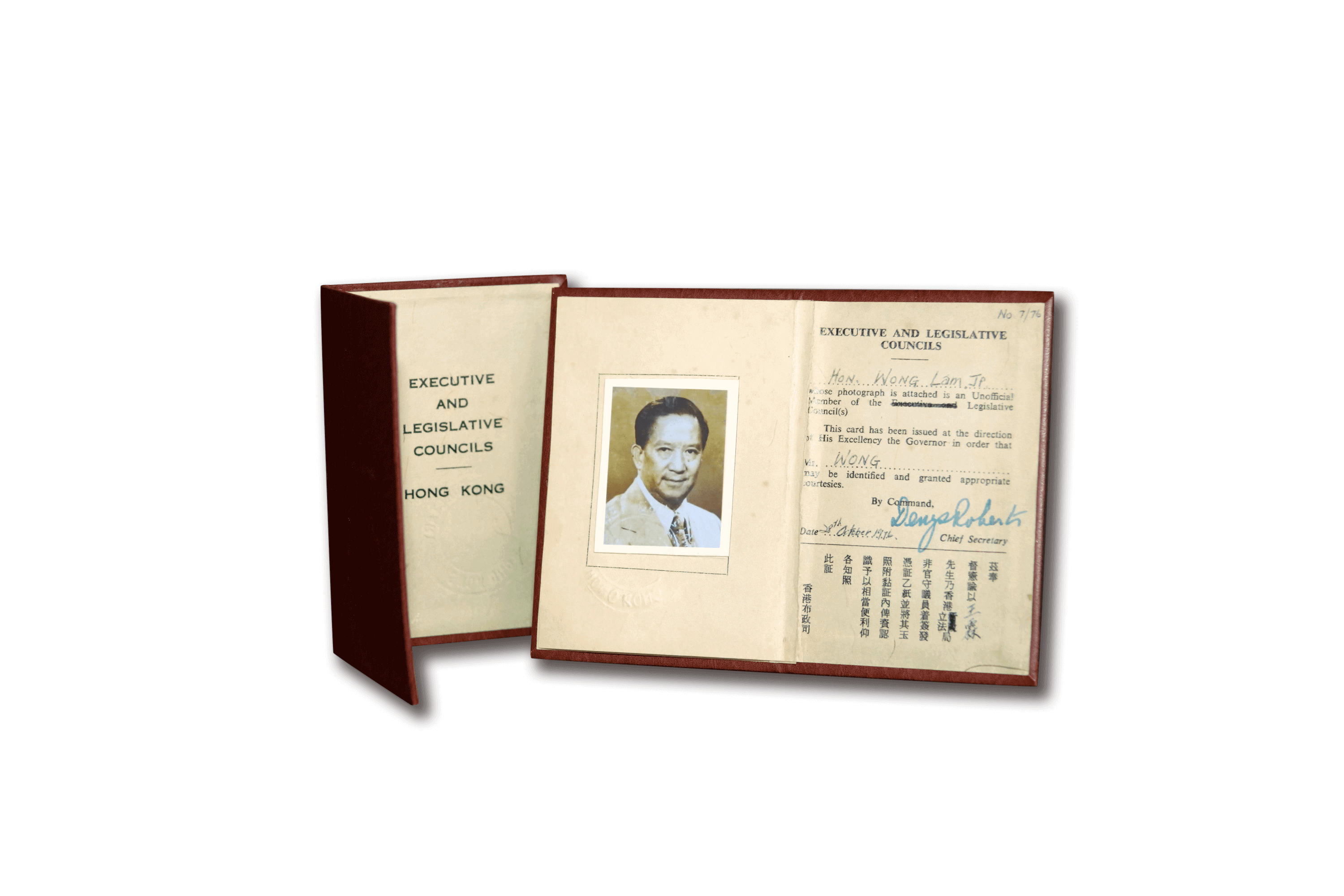
The Member’s identification pass issued to WONG Lam (1919-2016) (Replica)
(Source from WONG Lam)
|
| 1984 | Signing of the Sino-British Joint Declaration The Sino-British Joint Declaration on the Question of Hong Kong was signed. |
| 1985 | First LegCo indirect election The first indirect election of LegCo Members was held following the release of the Green Paper on the Further Development of Representative Government in Hong Kong. |
|
Home of LegCo in the former Supreme Court Building 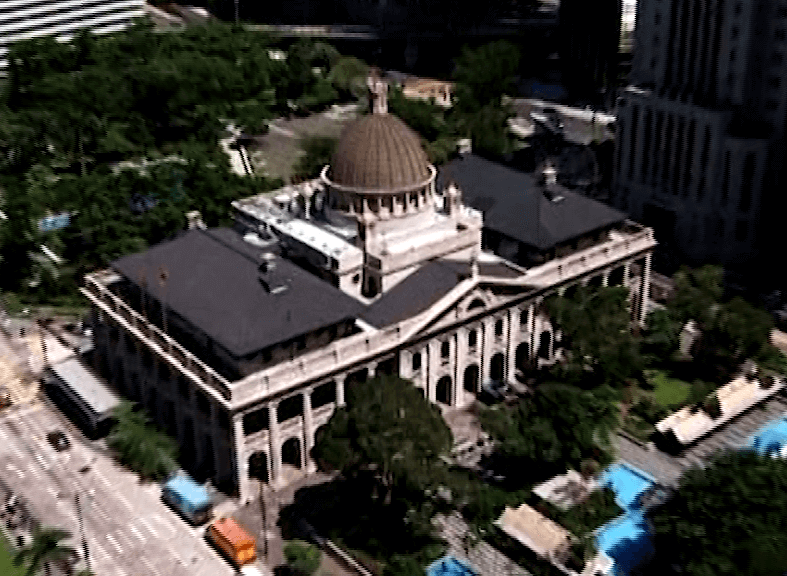
The home of LegCo from 1985 to 2011
|
|
| Powers and privileges of LegCo The Legislative Council (Powers and Privileges) Ordinance (Cap. 382) was enacted. |
|
| 1991 | First LegCo direct election The first LegCo direct election was held. |
| 1993 | Governor ceased to be the President of LegCo The Governor ceased to be the President of LegCo. The presidency was handed over to a Member elected from and among Unofficial Members. Sir John J SWAINE was the first elected President of LegCo. |
| 1994 | Establishment of The Legislative Council Commission As the governing body of the new independent LegCo Secretariat, the statutory Legislative Council Commission was established. |
| 1995 | First fully elected Legislature The first fully elected Legislature was composed of 60 Members. |
| 1996 | Establishment of the Provisional LegCo The Provisional LegCo was established as an interim Legislature for Hong Kong. |
| 1997 | Last LegCo under British rule The last LegCo under British rule ended. |
|
Passage of the Hong Kong Reunification Bill Passage of the Legislative Council Bill 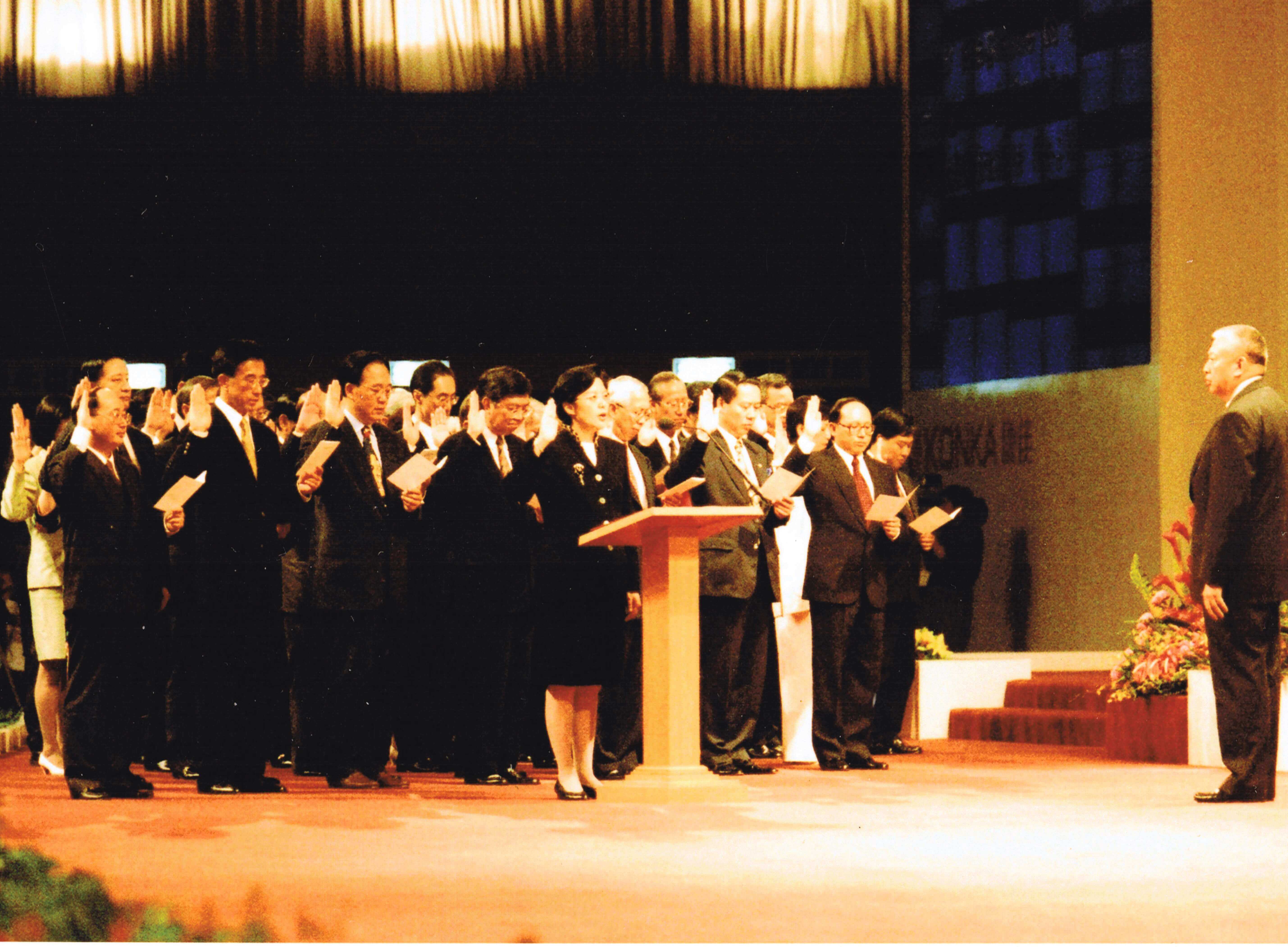
Swearing in by Members of the Provisional LegCo on 1 July 1997
(Courtesy of the HKSAR Government)
|
|
| 1998 |
Establishment of the First LegCo of the HKSAR .png)
After Hong Kong’s return to China, the President’s chair and the Coat of Arms of Hong Kong in the LegCo Chamber were replaced by a new chair and the emblem of the HKSAR
(Courtesy of the HKSAR Government)
|
| Method for the formation of LegCo The method for the formation of LegCo is specified in Annex II to the Basic Law. LegCo shall be composed of 60 Members for each term. |
|
| 2005 | Vetoing of the constitutional reform package The constitutional reform package proposing to expand the membership of LegCo from 60 to 70 in 2008 was vetoed. |
| 2008 | Composition of the Fourth LegCo The Fourth LegCo (2008-2012) has 60 Members, with 30 returned by functional constituencies and 30 returned by geographical constituencies. |
| 2010 |
Endorsement of the constitutional reform package 
The motion concerning the amendment to the method for the formation of LegCo was endorsed by LegCo in 2010
(Courtesy of the HKSAR Government)
|
| 2011 |
Relocation of LegCo to the LegCo Complex 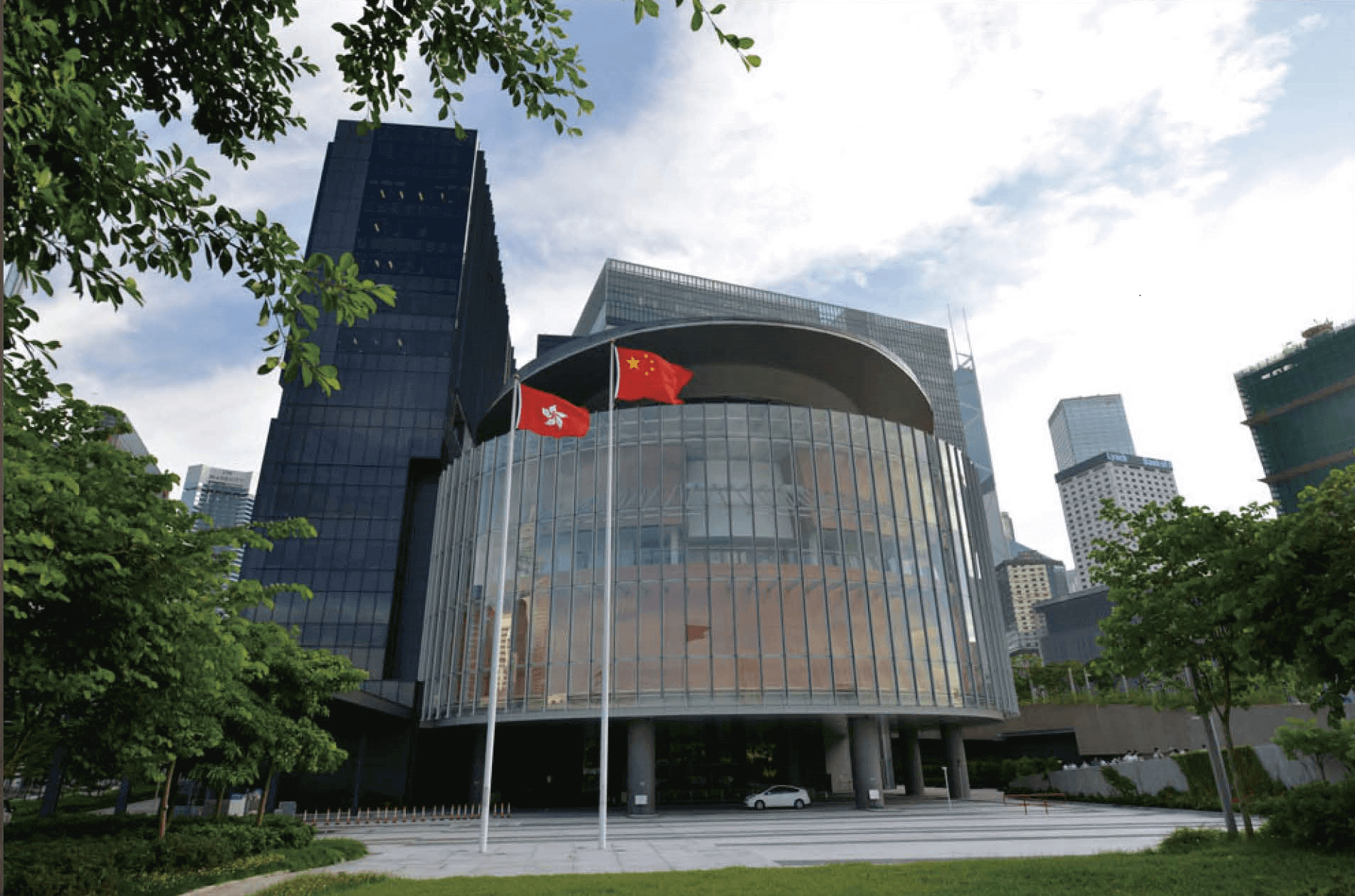
The LegCo Complex
|
| 2012 | Composition of the Fifth LegCo The constitutional reform package put forward in 2010 was endorsed. The Fifth LegCo (2012-2016) was composed of 70 Members, equally distributed between functional constituencies (35) and geographical constituencies (35). |
| 2014 | Formulation of the Policy on Access to the Legislature's Documents and Records The Policy on Access to the Legislature’s Documents and Records was formulated. |
| 2015 | Vetoing of the electoral reform package The electoral reform package was vetoed. The method for selecting the Chief Executive in 2012 would continue to be adopted in 2017. |
| 2016 | Interpretation of Article 104 of the Basic Law on oath-taking The Standing Committee of the National People’s Congress (“NPCSC”) made an interpretation of Article 104 of the Basic Law on oath-taking. |
| 2017 | Substantive amendments to the Rules of Procedure Resolutions to amend 50 Rules in the Rules of Procedure were passed. |
| 2019 | Intrusion into the LegCo Complex The LegCo Complex was intruded and vandalized by demonstrators, causing serious damage to various facilities of the Complex. |
| 2020 | Term of office of the Sixth LegCo In view of the severe COVID-19 epidemic situation, the Government postponed the general election for the Seventh LegCo. To address the issue arising from the postponement of the election, the NPCSC made the decision to let the Sixth LegCo continue to discharge its duties for no less than one year until the commencement of the Seventh LegCo. |
| 2021 |
Amendments to the method for the formation of LegCo |
| Review of the Rules of Procedure and House Rules The rules and practices of LegCo were reviewed in phases. Resolutions to amend the Rules of Procedure were passed by the Council and the consequential amendments to the House Rules were endorsed by the House Committee. |
|
| 2022 | Composition and commencement of the Seventh LegCo The method for the formation of LegCo (Annex II to the Basic Law) was amended by the NPCSC in 2021. The Seventh LegCo (2022-2025), commenced on 1 January 2022, is composed of 90 Members, returned by the Election Committee (40), functional constituencies (30) and geographical constituencies (20). |
| Expansion of the LegCo Complex To accommodate the increased membership of the Seventh LegCo and the additional demand for office space, the in-situ expansion project of the LegCo Complex commenced in September 2022. |
|
| 2023 | LegCo’s Automatic Speech Recognition System LegCo’s Automatic Speech Recognition System was launched in phases starting from September 2023 to prepare verbatim records for meetings of the Council and other committees. Real-time subtitling of meetings was further introduced in mid-2025. |
| 2024 |
Legislation for Article 23 of the Basic Law 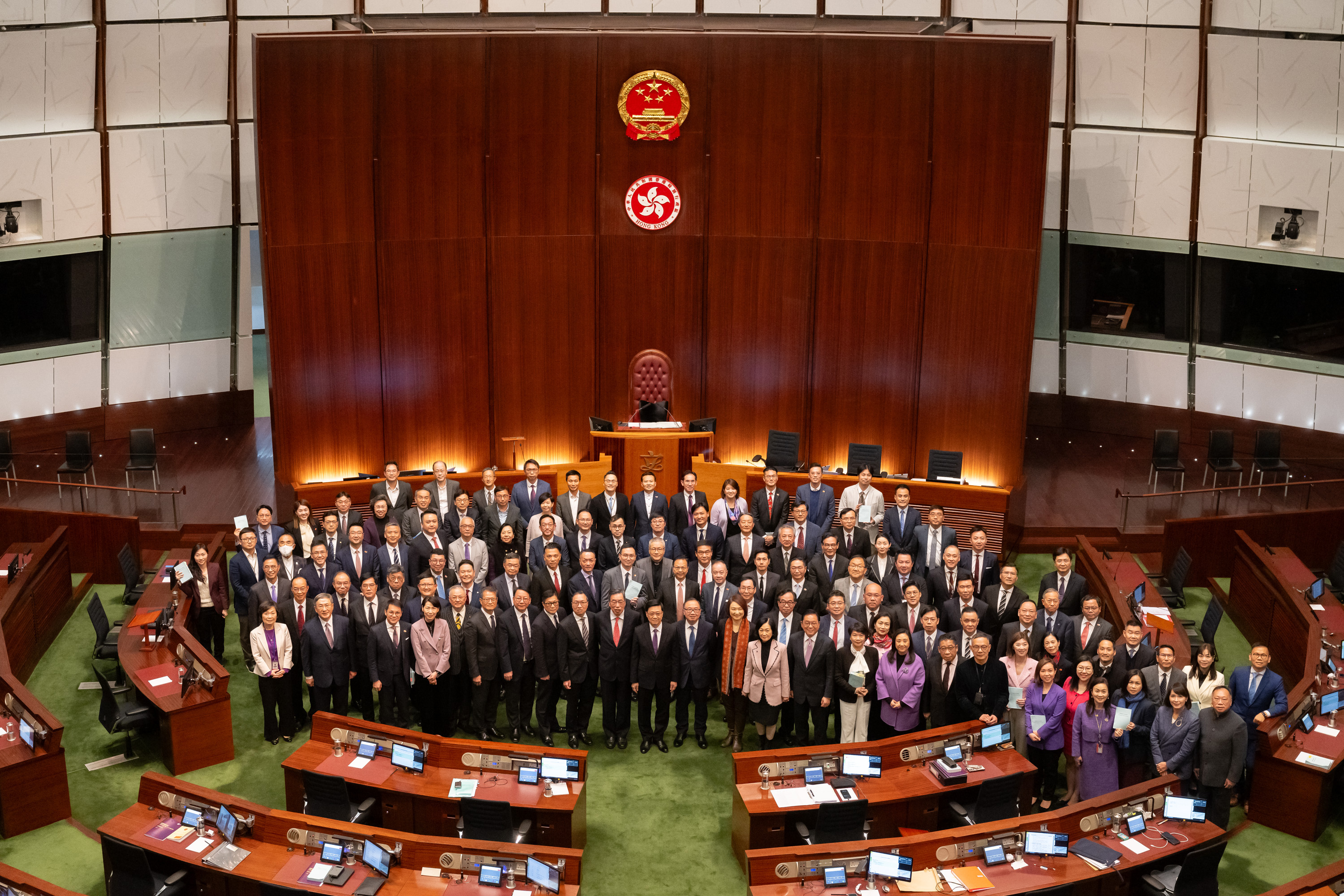
Group photo of Members and government officials taken after the passage of the Safeguarding National Security Bill
|
| 2025 |
Completion of the main works of the LegCo Complex expansion 
The LegCo Complex after expansion
|
|
Enhancing the system for performance of duties by Members of LegCo 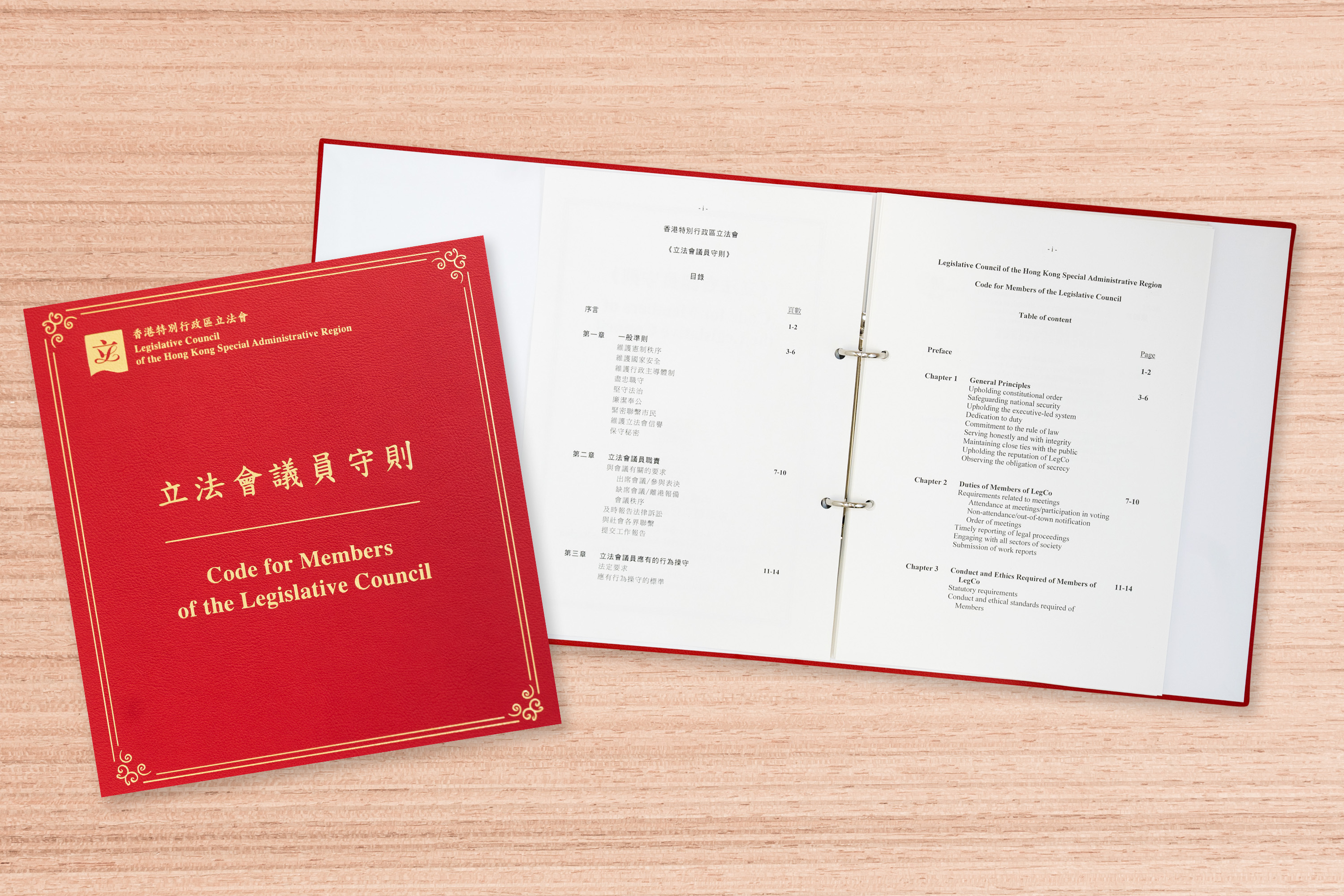
Code for Members of the Legislative Council
|
Last updated: January 2026